Nokia 2010 Annual Report Download - page 267
Download and view the complete annual report
Please find page 267 of the 2010 Nokia annual report below. You can navigate through the pages in the report by either clicking on the pages listed below, or by using the keyword search tool below to find specific information within the annual report.-
 1
1 -
 2
2 -
 3
3 -
 4
4 -
 5
5 -
 6
6 -
 7
7 -
 8
8 -
 9
9 -
 10
10 -
 11
11 -
 12
12 -
 13
13 -
 14
14 -
 15
15 -
 16
16 -
 17
17 -
 18
18 -
 19
19 -
 20
20 -
 21
21 -
 22
22 -
 23
23 -
 24
24 -
 25
25 -
 26
26 -
 27
27 -
 28
28 -
 29
29 -
 30
30 -
 31
31 -
 32
32 -
 33
33 -
 34
34 -
 35
35 -
 36
36 -
 37
37 -
 38
38 -
 39
39 -
 40
40 -
 41
41 -
 42
42 -
 43
43 -
 44
44 -
 45
45 -
 46
46 -
 47
47 -
 48
48 -
 49
49 -
 50
50 -
 51
51 -
 52
52 -
 53
53 -
 54
54 -
 55
55 -
 56
56 -
 57
57 -
 58
58 -
 59
59 -
 60
60 -
 61
61 -
 62
62 -
 63
63 -
 64
64 -
 65
65 -
 66
66 -
 67
67 -
 68
68 -
 69
69 -
 70
70 -
 71
71 -
 72
72 -
 73
73 -
 74
74 -
 75
75 -
 76
76 -
 77
77 -
 78
78 -
 79
79 -
 80
80 -
 81
81 -
 82
82 -
 83
83 -
 84
84 -
 85
85 -
 86
86 -
 87
87 -
 88
88 -
 89
89 -
 90
90 -
 91
91 -
 92
92 -
 93
93 -
 94
94 -
 95
95 -
 96
96 -
 97
97 -
 98
98 -
 99
99 -
 100
100 -
 101
101 -
 102
102 -
 103
103 -
 104
104 -
 105
105 -
 106
106 -
 107
107 -
 108
108 -
 109
109 -
 110
110 -
 111
111 -
 112
112 -
 113
113 -
 114
114 -
 115
115 -
 116
116 -
 117
117 -
 118
118 -
 119
119 -
 120
120 -
 121
121 -
 122
122 -
 123
123 -
 124
124 -
 125
125 -
 126
126 -
 127
127 -
 128
128 -
 129
129 -
 130
130 -
 131
131 -
 132
132 -
 133
133 -
 134
134 -
 135
135 -
 136
136 -
 137
137 -
 138
138 -
 139
139 -
 140
140 -
 141
141 -
 142
142 -
 143
143 -
 144
144 -
 145
145 -
 146
146 -
 147
147 -
 148
148 -
 149
149 -
 150
150 -
 151
151 -
 152
152 -
 153
153 -
 154
154 -
 155
155 -
 156
156 -
 157
157 -
 158
158 -
 159
159 -
 160
160 -
 161
161 -
 162
162 -
 163
163 -
 164
164 -
 165
165 -
 166
166 -
 167
167 -
 168
168 -
 169
169 -
 170
170 -
 171
171 -
 172
172 -
 173
173 -
 174
174 -
 175
175 -
 176
176 -
 177
177 -
 178
178 -
 179
179 -
 180
180 -
 181
181 -
 182
182 -
 183
183 -
 184
184 -
 185
185 -
 186
186 -
 187
187 -
 188
188 -
 189
189 -
 190
190 -
 191
191 -
 192
192 -
 193
193 -
 194
194 -
 195
195 -
 196
196 -
 197
197 -
 198
198 -
 199
199 -
 200
200 -
 201
201 -
 202
202 -
 203
203 -
 204
204 -
 205
205 -
 206
206 -
 207
207 -
 208
208 -
 209
209 -
 210
210 -
 211
211 -
 212
212 -
 213
213 -
 214
214 -
 215
215 -
 216
216 -
 217
217 -
 218
218 -
 219
219 -
 220
220 -
 221
221 -
 222
222 -
 223
223 -
 224
224 -
 225
225 -
 226
226 -
 227
227 -
 228
228 -
 229
229 -
 230
230 -
 231
231 -
 232
232 -
 233
233 -
 234
234 -
 235
235 -
 236
236 -
 237
237 -
 238
238 -
 239
239 -
 240
240 -
 241
241 -
 242
242 -
 243
243 -
 244
244 -
 245
245 -
 246
246 -
 247
247 -
 248
248 -
 249
249 -
 250
250 -
 251
251 -
 252
252 -
 253
253 -
 254
254 -
 255
255 -
 256
256 -
 257
257 -
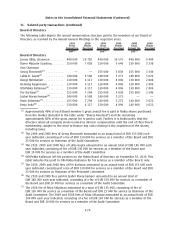 258
258 -
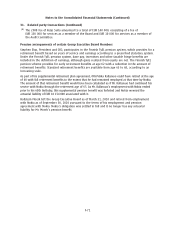 259
259 -
 260
260 -
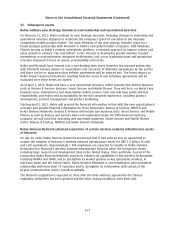 261
261 -
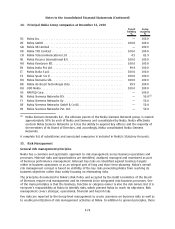 262
262 -
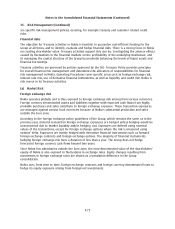 263
263 -
 264
264 -
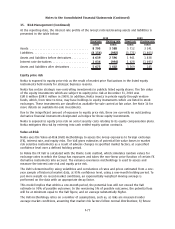 265
265 -
 266
266 -
 267
267 -
 268
268 -
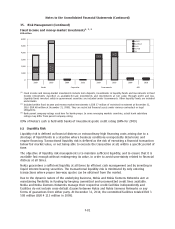 269
269 -
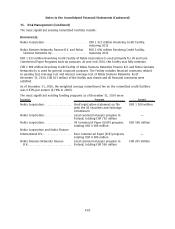 270
270 -
 271
271 -
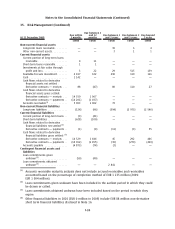 272
272 -
 273
273 -
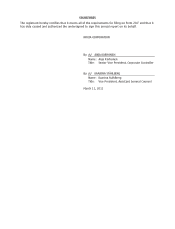 274
274 -
 275
275
 |
 |

35. Risk Management (Continued)
Except as detailed in the following table, the maximum exposure to credit risk is limited to the book
value of the financial assets included in Group’s balance sheet:
2010 2009
EURm EURm
Financial guarantees given on behalf of customers and other third parties ........... ——
Loan commitments given but not used ....................................... 85 99
85 99
Business Related Credit Risk
The Company aims to ensure the highest possible quality in accounts receivable and loans due from
customers and other third parties. The Group Credit Policy, approved by Group Executive Board, lays
out the framework for the management of the business related credit risks in all Nokia group
companies.
Credit exposure is measured as the total of accounts receivable and loans outstanding due from
customers and other third parties, and committed credits.
Group Credit Policy provides that credit decisions are based on credit evaluation including credit
ratings for larger exposures. Nokia & Nokia Siemens Networks Rating Policy defines the rating
principles. Ratings are approved by Nokia & Nokia Siemens Networks Rating Committee. Credit risks
are approved and monitored according to the credit policy of each business entity. These policies are
based on the Group Credit Policy. Concentrations of customer or country risks are monitored at the
Nokia Group level. When appropriate, credit risks are mitigated with the use of approved instruments,
such as letters of credit, collateral or insurance and sale of selected receivables.
The accounts receivable do not include any major concentrations of credit risk by customer or by
geography. Top three customers account for approximately 2.2%, 2.1% and 2.1% (2009: 2.2%, 2.2%
and 1.9%) of Group accounts receivable and loans due from customers and other third parties as at
December 31, 2010, while the top three credit exposures by country amounted to 8.5%, 7.4% and
5.5% (2009: 7.2%, 6.5% and 5.6%), respectively.
The Group has provided allowances for doubtful accounts as needed on accounts receivable and loans
due from customers and other third parties not past due, based on the analysis of debtors’ credit
quality and credit history. The Group establishes allowances for doubtful accounts that represent an
estimate of incurred losses as of the end of the reporting period. All receivables and loans due from
customers and other third parties are considered on an individual basis in establishing the allowances
for doubtful accounts.
At December 31, 2010, the carrying amount before deducting any allowances for doubtful accounts
relating to customers for which an allowance was provided amounted to EUR 2 521 million (2009:
EUR 2 528 million). The amount of provision taken against that portion of these receivables
considered to be impaired was EUR 363 million (2009: EUR 391 million) (see also note 20 Valuation
and qualifying accounts).
F79
Notes to the Consolidated Financial Statements (Continued)
